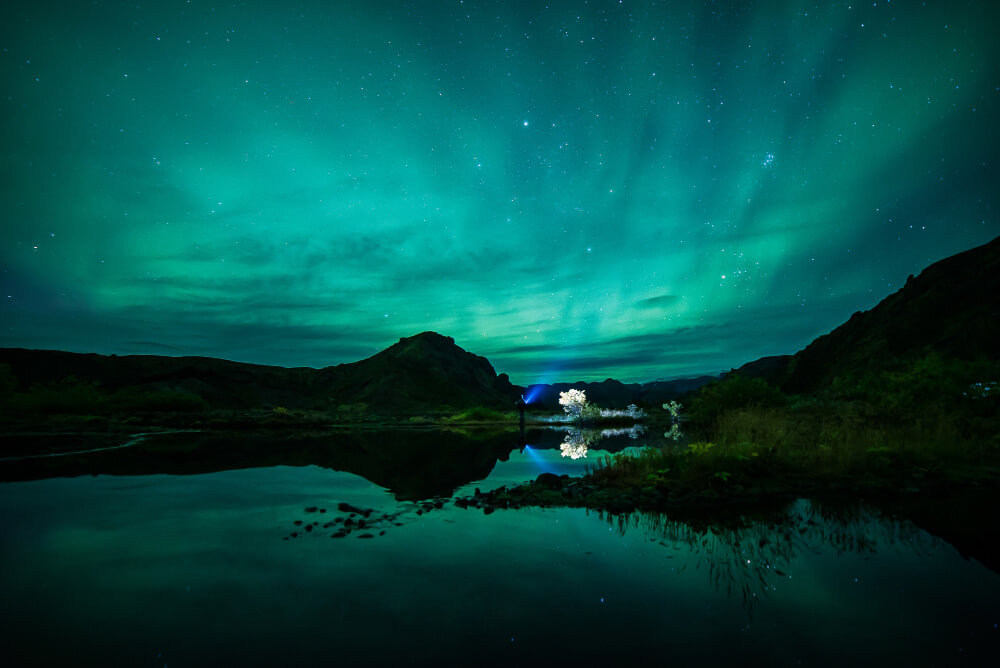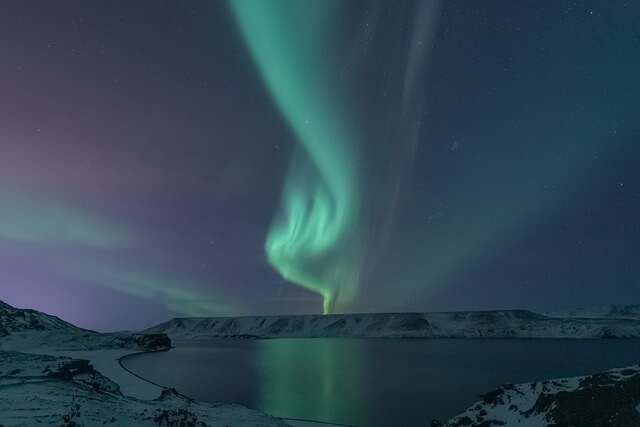Stewart Island, nestled in the southernmost reaches of New Zealand, holds a secret treasure that enchants both seasoned travelers and avid aurora hunters alike.

While many flock to the Northern Hemisphere to catch a glimpse of the mesmerizing Northern Lights, those in the know understand that Stewart Island offers a unique and unforgettable experience of its own.
In this comprehensive guide, we’ll delve into everything you need to know about chasing the Northern Lights on Stewart Island’s enchanting night skies.
Stewart Island’s Unique Position
Stewart Island’s geographical location, situated closer to the South Pole than any other inhabited landmass, grants it unparalleled access to the Southern Lights, or Aurora Australis.
This phenomenon, akin to its northern counterpart, paints the night sky with vivid hues of green, purple, and pink, creating a spectacle that is nothing short of awe-inspiring.
While the Southern Lights can be observed from various points across the Southern Hemisphere, Stewart Island’s relatively low light pollution and clear atmospheric conditions make it an optimal destination for aurora enthusiasts.
Significance in the Aurora Hunting Community
Within the aurora hunting community, Stewart Island holds a special place as a hidden gem for witnessing the Southern Lights.
Despite its remote location, word of its celestial wonders has spread among passionate stargazers and photographers, drawing them to its shores in search of a once-in-a-lifetime experience.
Whether you’re a seasoned aurora chaser or a curious traveler seeking a glimpse of nature’s grandeur, Stewart Island beckons with the promise of an unforgettable journey beneath the star-studded heavens.
Best Time to Witness the Northern Lights on Stewart Island
Optimal Time of Year
Timing is crucial when it comes to witnessing the Northern Lights on Stewart Island.
While the aurora can potentially be seen year-round, the best opportunities typically occur during the winter months, from May to August.
During this time, the nights are longer, providing ample darkness for the aurora to shine brightly against the backdrop of the southern sky.
Additionally, winter months often coincide with periods of heightened solar activity, increasing the likelihood of vibrant auroral displays.
Factors Affecting Visibility
Several factors influence the visibility of the Northern Lights on Stewart Island, making it essential to consider various elements when planning your aurora-hunting expedition.
- Solar Activity: The intensity and frequency of auroral displays are closely linked to solar activity, particularly solar flares and coronal mass ejections (CMEs). Monitoring solar activity through space weather forecasts and aurora prediction tools can help gauge the likelihood of auroral activity on Stewart Island.
- Weather Conditions: Clear, dark skies are essential for optimal aurora viewing. Cloud cover and atmospheric conditions can significantly impact visibility, so it’s crucial to monitor weather forecasts and choose nights with favorable conditions for aurora hunting.
- Geomagnetic Activity: The strength and orientation of Earth’s magnetic field influence the behavior of the aurora. During periods of heightened geomagnetic activity, such as geomagnetic storms, auroral displays may be more pronounced and visible at lower latitudes, including Stewart Island.
By keeping an eye on these factors and planning your visit accordingly, you can maximize your chances of witnessing the Northern Lights in all their glory on Stewart Island’s pristine night skies.
Choosing the Right Location
Different Viewing Locations
Stewart Island offers a variety of viewing locations, each with its own unique advantages for observing the Northern Lights. Here are some popular spots to consider:
- Oban: As the main settlement on Stewart Island, Oban provides convenient access to amenities and accommodations while still offering relatively dark skies for aurora viewing. Head to nearby beaches or elevated vantage points for unobstructed views of the southern horizon.
- Masonic Bay: Located on the eastern coast of Stewart Island, Masonic Bay offers secluded beaches and minimal light pollution, making it an excellent spot for stargazing and aurora hunting.
- Horseshoe Bay: Situated on the western side of Stewart Island, Horseshoe Bay provides stunning views of the Southern Ocean and distant horizons, ideal for capturing the aurora against a backdrop of rugged coastline.
- Ulva Island: For a truly immersive experience, consider venturing to Ulva Island, a predator-free sanctuary teeming with native flora and fauna. While not as dark as other locations on Stewart Island, Ulva Island offers a unique opportunity to witness the aurora amidst pristine wilderness.

Tips for Location Selection
When choosing the right location for aurora hunting on Stewart Island, consider the following tips:
- Minimize Light Pollution: Opt for locations away from artificial light sources, such as streetlights and buildings, to maximize visibility of the aurora.
- Check Accessibility: Ensure your chosen location is easily accessible by foot or vehicle, taking into account factors like terrain and weather conditions.
- Consider Safety: Prioritize safety when selecting a viewing spot, especially if venturing into remote areas or along coastal cliffs. Be aware of tides, rough seas, and potential hazards in the surrounding environment.
- Be Flexible: Keep an open mind and be prepared to relocate if conditions change or if a better viewing opportunity presents itself elsewhere on the island.
Photographing the Northern Lights
Photography Tips
Capturing the ethereal beauty of the Northern Lights on Stewart Island requires careful planning and technique.
Here are some photography tips to help you immortalize this awe-inspiring phenomenon:
- Use a Tripod: Stability is key when photographing the aurora. Invest in a sturdy tripod to keep your camera steady during long exposures, minimizing blur caused by camera shake.
- Choose the Right Settings: Start with a wide aperture (low f-stop) to capture as much light as possible. Experiment with different shutter speeds (usually between 5-30 seconds) and ISO settings to achieve the desired exposure without introducing excessive noise.
- Focus Manually: Autofocus can struggle in low-light conditions, so switch to manual focus and set your lens to infinity (∞) to ensure sharpness throughout the frame.
- Compose Carefully: Consider the surrounding landscape when framing your shot. Including interesting foreground elements, such as trees or rock formations, can add depth and context to your aurora photos.
- Experiment with White Balance: Play around with white balance settings to achieve the desired color temperature for your images. While the aurora often appears green to the naked eye, adjusting white balance can enhance or alter the colors captured in your photos.
- Be Patient and Persistent: Capturing the perfect aurora photo may require multiple attempts and hours of waiting. Stay patient, monitor aurora forecasts, and be prepared to seize the moment when the lights dance across the sky.
Local Expertise and Guided Tours
Overview of Local Experts
While Stewart Island offers ample opportunities for independent aurora hunting, tapping into local expertise can enhance your experience and increase your chances of success.
Local guides and aurora experts possess intimate knowledge of the island’s terrain, weather patterns, and aurora activity, providing invaluable insights for aurora hunters.
Benefits of Guided Tours
Joining a guided tour for aurora hunting on Stewart Island offers several advantages:
- Expert Guidance: Benefit from the expertise of seasoned guides who know the best viewing spots and optimal times for aurora sightings.
- Safety and Convenience: Guided tours often include transportation to and from viewing locations, ensuring your safety and eliminating the hassle of navigating unfamiliar terrain in the dark.
- Photography Assistance: Receive tips and guidance from experienced photographers on capturing stunning aurora images, helping you make the most of your photography opportunities.
- Group Experience: Share the excitement of aurora hunting with like-minded individuals and fellow travelers, creating memorable experiences and fostering camaraderie.
- Aurora Guarantee: Some guided tours offer an aurora guarantee, promising a refund or complimentary tour if the Northern Lights fail to make an appearance—a reassuring option for travelers seeking peace of mind.
Choosing the Right Tour
When selecting a guided aurora tour on Stewart Island, consider the following factors:
- Reputation and Reviews: Research tour operators and read reviews from past participants to gauge the quality of their services and customer satisfaction.
- Itinerary and Inclusions: Review the tour itinerary and offerings to ensure they align with your preferences and expectations, including transportation, photography guidance, and duration of the tour.
- Group Size: Consider the size of the tour group and the guide-to-participant ratio to ensure personalized attention and a more intimate experience.
- Flexibility and Contingency Plans: Inquire about the tour’s flexibility in case of unfavorable weather conditions or low aurora activity, and whether alternative activities or rescheduling options are available.
FAQs about Chasing the Northern Lights on Stewart Island
When is the best time to see the Northern Lights on Stewart Island?
The optimal time to witness the Northern Lights on Stewart Island is during the winter months, from May to August, when nights are longer, and solar activity is typically higher.
Are the Northern Lights visible year-round on Stewart Island?
While the aurora can potentially be seen year-round, the best opportunities occur during the winter months when conditions are most favorable for auroral displays.
What factors affect visibility of the Northern Lights on Stewart Island?
Visibility of the Northern Lights on Stewart Island is influenced by factors such as solar activity, weather conditions, and geomagnetic activity. Clear skies and minimal light pollution also contribute to optimal viewing conditions.
Do I need special equipment to photograph the Northern Lights on Stewart Island?
While not required, having a DSLR or mirrorless camera with manual exposure controls, a wide-angle lens, and a sturdy tripod can enhance your ability to capture stunning aurora photographs.
Are guided aurora tours available on Stewart Island?
Yes, several tour operators on Stewart Island offer guided aurora tours led by experienced guides who provide transportation, photography assistance, and expert knowledge of the best viewing spots.
Conclusion
As we conclude our guide to chasing the Northern Lights on Stewart Island’s mesmerizing night skies, we hope you feel inspired and equipped to embark on your own aurora-hunting adventure.
From understanding the best time to witness the aurora to mastering photography techniques and leveraging local expertise, this comprehensive guide has provided you with the tools and knowledge to make the most of your experience.
Stewart Island, with its remote location and pristine night skies, offers a truly magical setting for witnessing the celestial dance of the Northern Lights.
Whether you choose to explore independently or join a guided tour, the allure of the aurora awaits, promising moments of wonder and awe beneath the star-studded heavens.
As you journey into the darkness in search of nature’s most enchanting light show, remember to stay patient, stay persistent, and stay open to the beauty and mystery of the night sky.
Whether you’re greeted by a dazzling display of colors or simply savoring the serenity of the wilderness, each moment spent beneath the aurora’s glow is a testament to the extraordinary wonders of our universe.
So pack your bags, prepare your camera, and set your sights on Stewart Island’s night skies.
Whether you’re a seasoned aurora chaser or a curious traveler seeking new horizons, the adventure of a lifetime awaits beneath the celestial canopy.
Let the magic of the Northern Lights on Stewart Island’s enchanting night skies guide you on an unforgettable journey into the heart of nature’s grandeur.